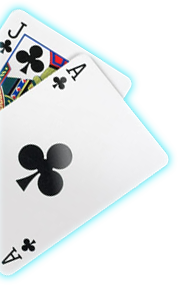
When playing blackjack, the house is always at the advantage when it comes to the odds. The rules of Blackjack are structured in such a way for a guaranteed house edge. This is why Blackjack has become a multi-billion industry in the U.S.A.
Surely the odds are not always pro house since there are winners. Some win a round due to pure luck while there are those smart players who do win because they made an effort to “study” what makes blackjack tick!
What are some of the facts of Blackjack odds in connection with standard Blackjack rules?
The house advantage or edge is linked to the practice that the dealer’s hand is the last one played. Players that exceed 21 immediately lose. When the dealer presents his hand and goes over 21, then the players that didn’t bust wins the round. Profit is made by the casino to those who immediately lost even if the dealer consequently loses. However, there is a Blackjack regulation that says a dealer wins the bets of all players that lost or busts even if the dealers hand lost too. So, no matter how favorable the blackjack rules are, this aspect always makes the house at an advantage.
It is likely that a player who stands on 17 or more and hits on 16 or less will go over 21 at twenty nine percent, so will the dealer. The odds seem even this way. But, with the Blackjack rule that says a dealer gets the stakes of all players who got busted if the dealer has busted himself, the house edge is still about 8%. Nevertheless a 3:2 payment when a player gets a blackjack lowers the house edge to 6%.
Favorable Rules
In Blackjack games with really favorable rules, a player who employs perfect basic strategies will most likely lower the house edge to 0.5%. These favorable rules are found in a 6-deck game:
• Double down on any first two cards
• Dealer stands on all 17s
• Natural pays 3 for 2 odds
• Double down after splitting pairs
There are many variations on these rules which could either help or hurt players. Below are some variations that are either positive or negative for a player. The positive values add to the house edge while the negative values are favorable to players.
• +.02% for Eight decks
• +.20% at soft 17 for Dealer
• +.22% for 10 or 11 Double down on
• +.09% for 91-11 Double down only
• +1.45% for Natural pays 6 to 5
• +.13% after splitting pairs no double down
• -.06% when Resplitting of Aces
• -.21% when Doubling down on cards
The goal of every Blackjack player is to do away with negative variations because these add up to the casino’s house edge. So avoiding dealer hits soft 17 and natural pay 6:5 are definitely unfavorable to players. Adding or subtracting the values of the variant to 0.5% (baseline edge) will give the value of the house edge against a player. How is this?
Let’s say a player finds a 6-deck game where he can only double down on a two card count of 10 or 11 and in which a dealer hits a soft 17. This particular game has a baseline house of 0.50% plus a 0.20% (soft 17 hit for dealer) plus a 0.22% (double down on 10/11 only), then the house edge against player is 0.92%.
As a rule, a Blackjack player must look for games that will give him the best odds.












